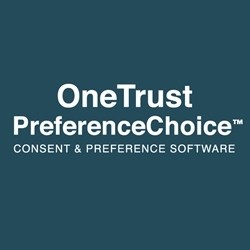As a marketer, your most coveted possession is your marketable database. Marketers today are data-hungry, and that's no secret. The more information you have about your customers, the better you can deliver content that will drive conversions and revenue.
Brand loyalty is marketing's sweet spot. Targeting current customers with personalized cross-sell or upsell messaging, using specific segments, is a must. But many marketers see global privacy regulations as a hindrance that may reduce their marketable database.
For customers, privacy is a top priority, along with having more control over their data. They want personalization, but they also want to know that a brand is looking out for their best interests. That's where a preference management system becomes key: You can show customers that you're listening to what they want while also respecting and protecting their privacy.

Here are four ways a preference management strategy can help you create a better, more personalized experience for your customer.
1. Reduce the number of opt-outs
Avoiding opt-outs and unsubscribes is one of the most common challenges for marketers. Although you can't control the behavior of customers, you can give them alternatives that can reduce the risk of their taking an irreversible "unsubscribe to all emails" action.
In traditional preference management, consumers have three options:
- Globally unsubscribe
- Report as spam
- Manage preferences
Without a preference management system in place, you can be one click away from a global unsubscribe or a place in the spam folder.
Implementing a preference center or a trust center means you can reduce the amount of global unsubscribes and spam reports. You'll protect your marketable database, and you won't lose out on the opportunity to contact your customer altogether.
2. Put the user in the driver's seat
Creating personalized experiences for customers can lead to valuable brand loyalty by building trust with your audience. You demonstrate to them that you are listening to what they want and you are responding to their desires.
A preference management center lets you collect granular information about customers' preferences so you can create the most targeted messaging.
In addition to providing options aside from an opt-out, a preference management system will help you understand your audience members to the core and deliver to them what they want, when and where they want it:
- Interests: Not every email you send will be relevant to every audience member. Let users self-segment and choose relevant products and content they want to hear about.
- Frequency: A major contributor to unsubscribes is frequency fatigue—too many emails being sent. Give users control over how much they want to hear from you: daily, weekly, monthly, or quarterly.
- Channels: Improve your user experience by meeting them where they are: email, mobile app, and/or SMS. Allow them to choose the channels through which they hear from you.
3. Centralize your management
You communicate with your users across various channels, platforms, and business functions that may be siloed or improperly synced to one another. Without a centralized, single source of truth for consent and preferences, you risk disappointing your audience.
For example, a user may opt out of product updates via one channel—say, a webinar registration—but you would make the mistake of sending them product-update messaging through a different channel, such as email, several days later.
That's a failure to meet user expectations. It ties a negative experience to your brand, which does the opposite of driving brand engagement and loyalty. Keeping a maintained central record of consent across all touchpoints allows you to scale your messaging and maintain trust with your customer.
Centralized management of data is also valuable for helping marketers plan campaigns, maintain a consistent understanding of their addressable market over time, and demonstrate compliance with the least amount of effort and stress.
4. Go beyond regulated consent
Privacy is at the forefront of the consumer's mind, now more than ever. Complying with regulations like CASL, GDPR, CCPA, and LGPD is key, along with meeting customer expectations around privacy and security.
In the midst of ongoing privacy regulations, marketers can use preference management as a way to respect data privacy and build trust with customers. Unifying privacy and marketing meets the overall needs of consumers. They gain valuable trust knowing how their data is safely being used to build a relationship on their terms.
* * *
The most valuable component to your work as a marketer is building trust with your customers through better understanding of what they want. Preference management should be viewed as a tool to understand your customers, ultimately giving them a satisfying and personalized experience with your company.





